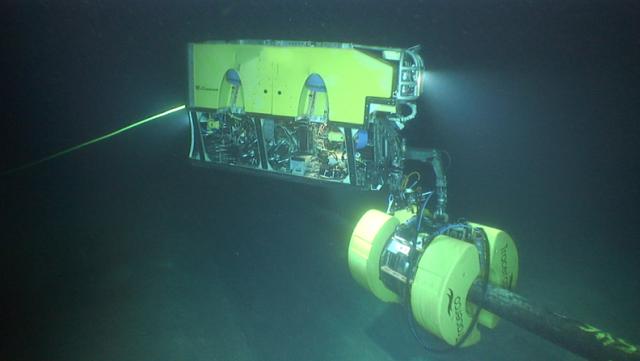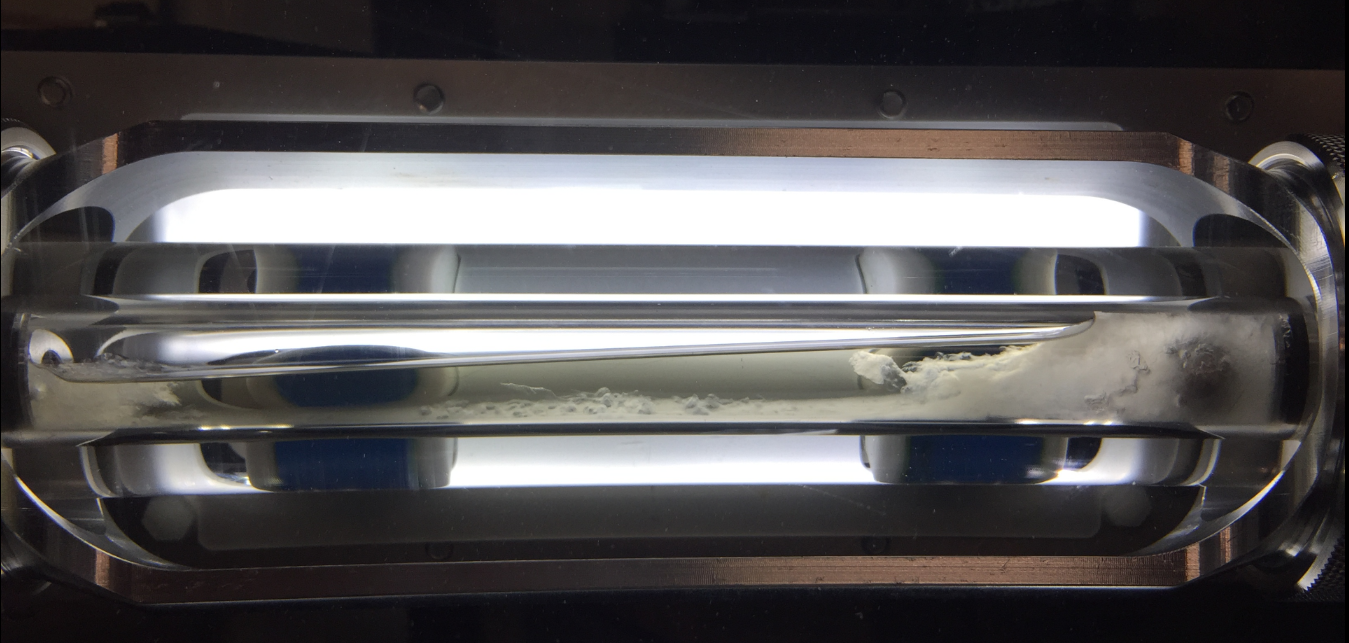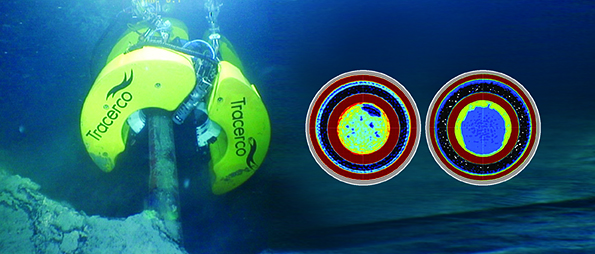
Flow assurance and production chemistry issues such as hydrate formation, wax deposition, high viscosity emulsions and artificial lift options are constant challenges in harsh subsea environments, which can render these smaller oil pools uneconomic.
As every production fluid composition and physical behavior is unique, an understanding of the fluid behavior across all engineering disciplines is essential in ensuring reliable production offshore.
Solutions Through Greater Understanding
“A misunderstanding of the fluid behavior between disciplines, particularly flow assurance and production chemistry, can result in suboptimal design of the system, which can impact short-term capex decisions and impact long-term production volumes,” said Conor Sherrard, senior engineer at Assured Flow Solutions (AFS). “There have been many recent examples of poor design choices, made as a result of a misunderstanding of the fluid production chemistry, leading to underperforming production systems with significant CAPEX and OPEX implications.
“The issue of miscommunication between fluid testing, production chemistry and flow assurance generally manifests itself through a lack of adequate information transfer from the laboratory and production chemists to the flow assurance discipline,” he said, “and a misinterpretation by flow assurance engineers of the production chemistry results, and the capabilities and limitations of the laboratory testing methodologies.”
Reducing Chemical Use
Recently, AFS was approached by an offshore operator with the task of reducing the quantity of low-dose hydrate inhibitor (LDHI) being injected in one of its offshore systems. Prior to engagement with AFS, the operator was injecting what it deemed to be a safe quantity of LDHI based on the vendor’s recommendation.

“A rocking cell test was performed at reduced LDHI volumes to determine if the hydrate particles would agglomerate and form a blockage subsea at various levels of hydrate subcooling,” Sherrard said. “The rocking cell test conditions were obtained from a multiphase modeling flow assurance assessment and fed back to the laboratory, which the chemical vendor didn’t have the capabilities to perform. We were able to perform an integrated testing, production chemistry and flow assurance analysis to confidently show that the volume of inhibitor being injected could be cut by over 50%, resulting in a saving of greater than $US10 million per annum.”
The Behavior Of Wax
Wax is a natural component of crude oil, but some fields have significant quantities of wax that can cause problems when operating pipelines in cold environments. The assessment of wax deposition potential is a standard part of flow assurance. The problem comes when the assessment is either not completed or the data used to complete the assessment is either incorrect or too preliminary.
“Often, we see wax properties of fluids condensed to a table within a basis of design, which shows little of the expected behavior and places potentially heavy conservatisms on the design approach,” said Jacqueline Geddes-Smith, production assurance manager for Xodus in Scotland. “This can lead to expensive decisions relating to thermal management of the system and operations intervention requirements being set out for wax management across the life of the asset.”
For improved flow, it is necessary to challenge this basis to provide enhanced guidance on the behaviour of wax within pipelines and to challenge the operating philosophies in place as a means of design and operability optimisation.
“The problem with wax is that as the oil in a pipeline cools down along its length, wax can be deposited on the wall of the pipe (the coldest part),” Geddes-Smith said. “If left unchecked, this can lead to complete blockage of the pipeline and total loss of production.”
Problems Of Sampling
There are still instances, although infrequently, of significant operating problems due to wax deposition. Poor sampling and insufficient lab analysis of poor design decisions with regards to insulation specification have led to problems ranging from excessive pigging requirements to control wax, to high chemical usage to assist with pour point depression or limit the deposition. In extreme cases, stuck pigs or wax build up can still lead to total loss of production and expensive remediation costs.
Geddes-Smith explains that the risk profile starts with getting experienced vendors to take these samples and ensuring that the samples are transported and stored correctly is important. From there, good integration between the reservoir engineers, the flow assurance specialists and the field development team is needed to ensure that the risks are understood, and the design managed accordingly. A clear understanding of the operating envelope and any uncertainties that can affect this envelope and the subsequent asset operability need to be well understood and accepted.
“Xodus has historically used an integrated approach to design,” Geddes-Smith said. “Access to reservoir expertise and production chemists as well as flow assurance and field development specialists allows us to build a holistic picture of the asset design and operability during the design stage and qualify the risks to the delivery of a project to meet the required metrics.”
Identifying The Source
Prevention is always better than cure. Routine pigging can help to keep the pipeline clear of deposit or doping with an inhibitor chemical, both methods add cost and in the case of pigging, the added risk of getting the pig stuck and blocking the pipeline.
“If the worst does happen, then the operator is faced with the challenge of remediation,” said Mike Banks, business development manager-subsea applications at Tracero. “This can include gel pigs, the use of chemicals, heating, coiled tubing, water jetting, progressive pigging campaigns and so on. Depending on where the restriction is, the operator may need to hot tap the pipeline to provide access for the remediation approach.”
These remediation attempts are not always successful, in fact approximately 50% to 80% of remediation attempts fail first time mainly due to the lack of complete understanding of the nature or location of the restriction. “In order to successfully remediate a pipeline blockage, you need to know where it is and what it is,” Banks said.
Two technologies from Tracero are helping to improve the understanding of exactly where the blockages are. Explorer is a fast screening tool to accurately locate areas of deposit. It does this by measuring the mean density of the pipeline contents as it scans along the pipeline. If there is a density difference between the process fluid and deposit material, then it can be located using Explorer.
Discovery is a subsea CT scanner, similar in principle to a medical CT scanner, and can provide a density map, in effect a picture of the pipeline and its contents. In addition to information about the integrity of the pipeline itself, it will show the extent and shape of the deposit within the pipeline. Accurate density measurements can be made which can help to identify the deposit material and give you the information you need to select the most appropriate remediation approach.

In a recent application, a pipeline that was completely blocked. “Explorer was used to screen six kilometres of pipeline and quickly identified three areas of high density, thereby locating three areas of potential blockage,” Banks continues. “Discovery was then deployed at these locations to characterise the restrictions. The deposit material was identified as ashphaltene and in some locations this contained gas pockets, in others it was a level of asphaltene deposit with a gas void above and in the worst case, a complete full-bore blockage.”
Discovery was also used to measure the gas density before and after a step change in gas pressure to establish if there was gas communication through these areas of deposit.
With these and other innovations to assure flow and maximize profitability many of the North Sea’s stranded assets with be economically viable to develop, further extending the life of many fields.
Recommended Reading
Defeating the ‘Four Horsemen’ of Flow Assurance
2024-04-18 - Service companies combine processes and techniques to mitigate the impact of paraffin, asphaltenes, hydrates and scale on production—and keep the cash flowing.
Tech Trends: AI Increasing Data Center Demand for Energy
2024-04-16 - In this month’s Tech Trends, new technologies equipped with artificial intelligence take the forefront, as they assist with safety and seismic fault detection. Also, independent contractor Stena Drilling begins upgrades for their Evolution drillship.
AVEVA: Immersive Tech, Augmented Reality and What’s New in the Cloud
2024-04-15 - Rob McGreevy, AVEVA’s chief product officer, talks about technology advancements that give employees on the job training without any of the risks.
Lift-off: How AI is Boosting Field and Employee Productivity
2024-04-12 - From data extraction to well optimization, the oil and gas industry embraces AI.
AI Poised to Break Out of its Oilfield Niche
2024-04-11 - At the AI in Oil & Gas Conference in Houston, experts talked up the benefits artificial intelligence can provide to the downstream, midstream and upstream sectors, while assuring the audience humans will still run the show.






